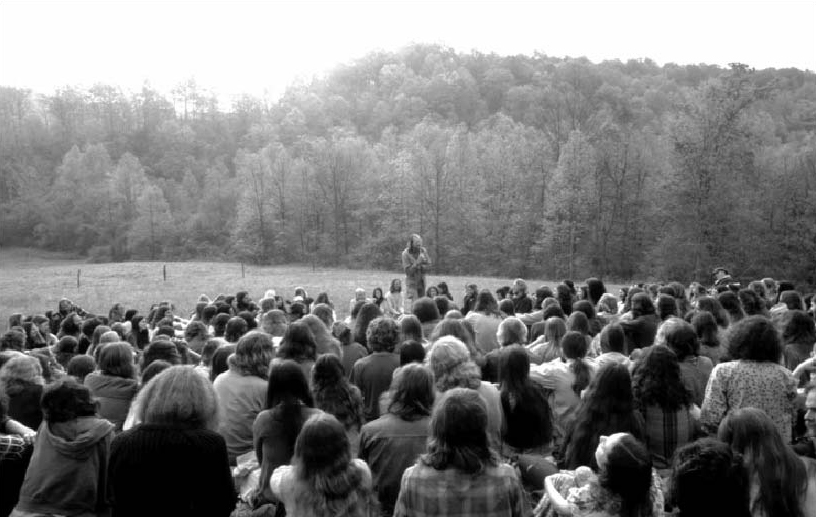No Looking After the Internet is a monthly “looking group” that invites participants to look at a photograph (or series of photographs) they are unfamiliar with, and “read” the image out-loud together. Chosen in relation to an exhibition, an artist’s body of work, or an ongoing research project, the looking group will focus on difficult images that present a challenge to practices of looking. If these images ask the viewer to occupy the position of the witness, No Looking offers the space and time to look at these photographs in detail: to return to these difficult scenes in another context where we can look at them slowly and unpack our responses to the image.
Premised on the idea that we don’t always trust our interpretive abilities as viewers, the aim of No Looking is to examine the differences between witnessing and looking. How does a slower form of looking allow us to be self-reflexive about our role as spectators? How do we look at these images differently when we interpret them with a community of others?
No Looking takes its inspiration and name from No Reading After the Internet, an out-loud reading and discussion group facilitated by cheyanne turions and Alexander Muir that meets regularly in Toronto and Vancouver.
Adam Broomberg and Oliver Chanarin’s To Photograph the Details of a Dark Horse in Low Light
Co-facilitated by Kim Simon
Tuesday, May 14, 2013
7:00 pm
Gallery TPW R&D
(1256 Dundas St. W.)
In dialogue with Adam Broomberg and Oliver Chanarin’s national billboard campaign and exhibition, To Photograph the Details of a Dark Horse in Low Light, the May meeting of No Looking will consider images of refusal. By recontextualizing a series of reference images used by Kodak, and juxtaposing them with a newly created image that—according to Kodak’s processes of standardization—should be impossible, Broomberg and Chanarin’s project aims to unpack the racial and cultural politics of photographic exposure. These are images born out of a struggle to refuse photographic representation and an insistence on critically reevaluating existing images, rather than producing new ones. This meeting of No Looking will therefore examine images that similarly refuse the norms of photographic representation.
As the Scotiabank CONTACT Photography Festival notes:Adam Broomberg and Oliver Chanarin’s To Photograph the Details of a Dark Horse in Low Light presents a national billboard campaign that depicts glamorous Caucasian women in high-contrast dress posed in front of neutral grey backgrounds. Collectively known as “Shirleys,” the portraits are culled from an archive of Kodak “norm reference cards,” historically used to calibrate skin tone in a photograph. French director Jean-Luc Godard made Kodak’s apparent predilection for white skin famous by refusing to use Kodak film on assignment in Mozambique in 1975. Kodak film, he insisted, was “racist.” Responding primarily to the confectionary and furniture industries’ complaints that they could not properly render dark chocolate or dark wood, Kodak chemists developed an emulsion that more accurately depicted darker colours: Gold Max, the first popular consumer film to address this problem, was initially described by Kodak as able “to photograph the details of a dark horse in low light.”
Broomberg and Chanarin’s billboards bring Shirley out of history and into a sea of contemporary consumer imagery. The portraits are juxtaposed with a graphic play of tonal and colour scales, and overlaid with the label “normal.” The new images hijack the representational space of urban advertising to raise questions about the relationship between the social and the technical, and the possibility that politics is bound up with our material history.
Recently, Broomberg and Chanarin were invited to “document” the African country Gabon. Before the trip, they collected Kodak film stock that expired between the 1950s–70s, film that Godard would have called racist. Using the expired film, they succeeded in producing just a single frame from the many colour rolls they exposed. This image will be on view at the Gallery TPW R&D project space, 1256 Dundas St W, May 11 – June 8.
Adam Broomberg and Oliver Chanarin are artists living and working in London. Together they have published nine monographs and have had numerous international exhibitions including The Gwagnju Biennale, the Stedelijk Museum, the International Center of Photography, KW Institute for Contemporary Art, The Photographers Gallery and Mathaf Arab Museum of Modern Art. Broomberg and Chanarin teach at the Zurich University of the Arts and are Visiting Fellows at the University of the Arts London. Their work is represented in major public and private collections including Tate Modern, the Stedelijk Museum, Victoria and Albert Museum, Musee de l’Elysee and the International Center of Photography. Most recently they have been shortlisted for the Deutsche Börse Photography Prize.

